Ireland’s Forests: Exploring The Country’s Enchanted Woodlands!
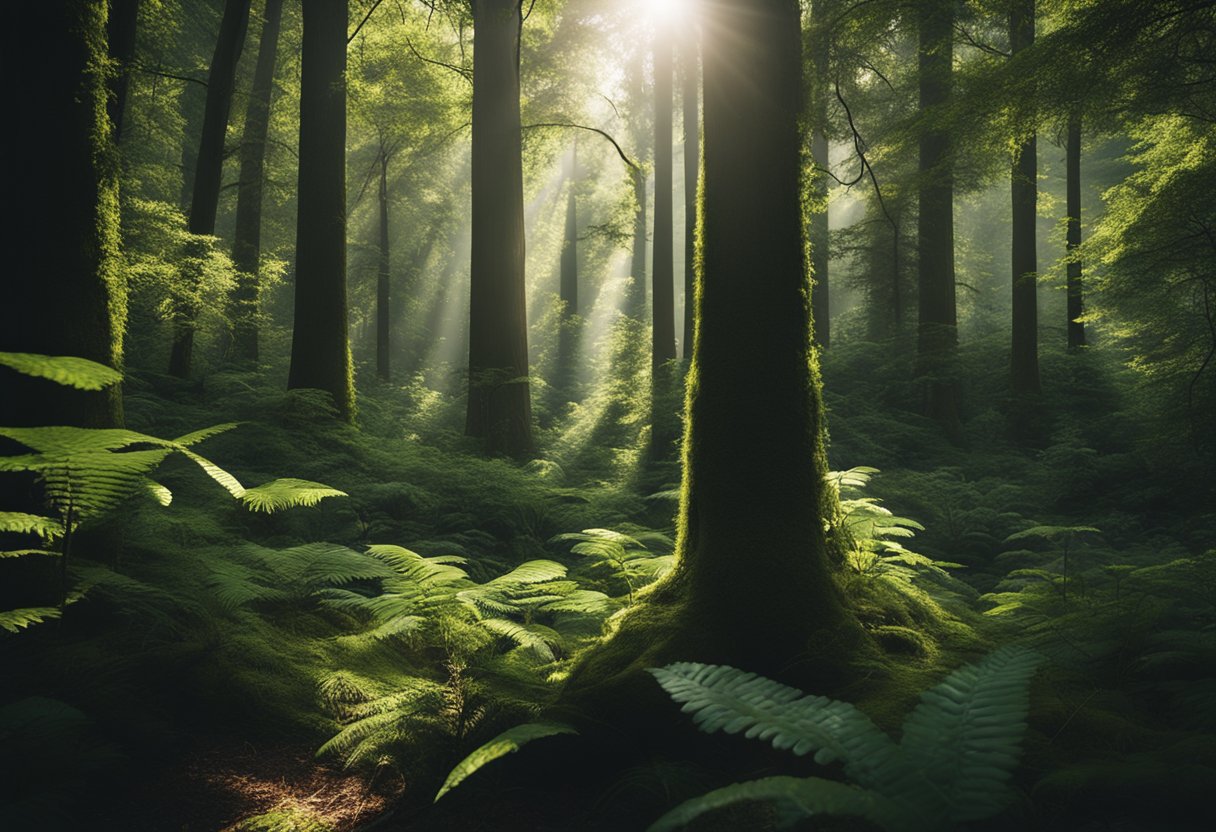
Updated On: April 15, 2024 by Esraa Mahmoud
The mystical Ireland’s forests captivate the imagination like few other wonders of the natural world. From the lush, verdant expanses of Ireland’s ancient woods, with their rich mythology entwined in the roots of every hawthorn and oak, to the teeming life and boundless diversity of the Amazon Rainforest, these woodlands are more than just places of beauty.
They are vital, breathing organisms that house an incredible variety of flora and fauna, underpin complex socio-economic systems, and offer a space for humans to reconnect with nature.
In traversing these enigmatic woodlands, we find a compelling tapestry of historical narratives where forests have shaped and been shaped by human activity. In this article, we explore both the pressing challenges they face and the essential conservation efforts required to sustain them.
As custodians of these enchanting habitats, we are reminded of our responsibility to manage them sustainably, ensuring they endure for future generations to draw inspiration, knowledge, and peace.
The Historical Tapestry of Ireland’s Forests!

Ireland’s forests possess a rich history that intertwines with the nation’s cultural and ecological narrative. Our exploration details the journey from the ancient wildwoods to the contemporary efforts in forest recovery.
From Ancient Times to Modern Days
Long before our modern interventions, the green landscapes of Ireland were once venerably cloaked in dense woodlands. Historical accounts and archaeological findings indicate that native woodlands covered much of the island following the last Ice Age, stretching unbroken for centuries.
Early first farmers began altering these woodland environments, clearing trees to make way for settlement and agriculture. Over millennia, the exploitation of resources and the demand for arable land gradually transformed much of the forested scenery.
The Decline and Rebirth of Irish Forestry
The decline of Ireland’s forests accelerated from the medieval period, with trees being extensively felled for various industries and urban expansion. By the 17th and 18th centuries, deforestation had reached its critical turning point, with reports indicating a drastic decrease in woodland cover.
However, recognising the ecological, economic, and cultural losses, the past century has ushered in a rebirth of Irish forestry. Reforestation efforts and sustainable practices are being promoted, aiming to restore Ireland’s verdant legacy and answering the question of how Ireland lost its forests and how to get them back.
Trinity College Research on Pollen Records
At Trinity College, groundbreaking research has been illuminating our understanding of historical vegetation changes. Detailed pollen record studies are unwrapping the story of Ireland’s ecological past, providing insights into the composition of ancient woodlands and the factors driving their transformation.
This pollen data, collected from sediments in lakes and bogs, serves as a time capsule from which we gain knowledge about plant diversity and forest extent across ages. Such research bolsters our capacity to manage and recover our cherished woodland environments in an informed manner.
Forest Cover and Biodiversity in Europe
In Europe, forests are not only vast carbon sinks but also hotspots of biodiversity, playing a crucial role in ecological balance. Our examination focuses on the native woodlands and the impressive diversity of tree species that the continent shelters.
Native Woodland Consistency
European forests cover approximately 35% of the land, with a rich tapestry of native woodlands that have evolved over millennia. The consistency of these woodlands is crucial for maintaining the continent’s biodiversity.
They support complex ecosystems, a fact underscored by findings from the European Forest Institute, which emphasise their ecological significance. Native forests, like those found in the mystical woods of Ireland highlighted by Connolly Cove, offer a glimpse into ancient and complex ecological networks.
Diversity of Tree Species Across Continents
Europe is home to a staggering diversity of tree species, from the resilient Scots Pine to the iconic English Oak. These species are spread across the continent and contribute significantly to the biodiversity of each region.
The variety is crucial for ecosystem services, such as habitat provision and soil stabilization. In the context of a global comparison, European forests are characterised by a unique composition of tree diversity that is distinct from other continents, showing a blend of deciduous and coniferous flora that adapts to varying climatic zones.
The ResearchGate publication provides insights into how these forests support a wide range of flora and fauna, underlying the importance of protecting this diversity against threats such as deforestation and climate change.
The Socio-economic Impact of Forests
Forests play a crucial role in both the environment and the economy, shaping the lives of farmers and influencing national markets. Our understanding of this impact is vital to creating effective policies and practices.
Agriculture vs Forestry
Agriculture and forestry often find themselves in a dynamic but challenging relationship. Farmers rely on forests for ecosystem services such as water regulation and soil fertility, which are essential for productive agriculture.
Meanwhile, forestry practices can either enrich agricultural lands or, conversely, compete with them for space. In Ireland, forestry has a significant socio-economic role, providing employment and materials while complementing traditional farming practices.
Forests in National Economy and Export
Forests contribute substantially to national economies by providing raw materials for industries and goods for export. The government typically plays a pivotal role in managing forest resources to maximise economic gains while ensuring sustainability.
In terms of exports, wood products from forestry form a vital component in trade; Ireland, for instance, exports a considerable amount of timber to Europe and beyond. This not only bolsters the nation’s economy but also supports rural livelihoods and community development.
Conservation Efforts and Government Roles
In our quest to maintain the planet’s ecological balance, reforestation initiatives and policy frameworks play critical roles. Governments, alongside conservation bodies, strive to secure the future of our mystical forests.
Reforestation and Afforestation Initiatives
Reforestation efforts, such as those led by government entities and environmental organisations, aim to breathe new life into degraded lands. In Ireland, Coillte, a commercial forestry business, has initiated projects to replant native trees, enrich biodiversity, and enhance the green spaces that are an indelible part of our heritage.
Coillte’s role transcends commercial interests, contributing to the restoration of ancient woods and creating afforested areas for future generations.
In the vast expanses of the Amazon Rainforest, where deforestation has taken a toll, the establishment of new trees and the management of natural regeneration have become crucial for a healthy planet. These activities ensure the ongoing existence of this biodiverse hotspot that plays a significant role in regulating the world’s climate.
Policy for Protecting Ancient Woods
Policy-making is an essential aspect of conservation, providing a framework that dictates how ancient woods are protected. Governments create national park statuses, enforce environmental laws, and collaborate internationally.
For example, the Brazilian government’s involvement has been fundamental in protecting the Amazon through national and international funding, as well as strategic leadership.
The impact of such policies is not just local but also global. International agreements, such as the commitment by world leaders to end deforestation by 2030, showcase the synchronised approach needed to protect these irreplaceable resources. Responsibly managing forests ensures not only the preservation of diverse ecosystems but also the safeguarding of our climate and the multitude of services forests provide to humanity.
Indigenous Flora and Fauna
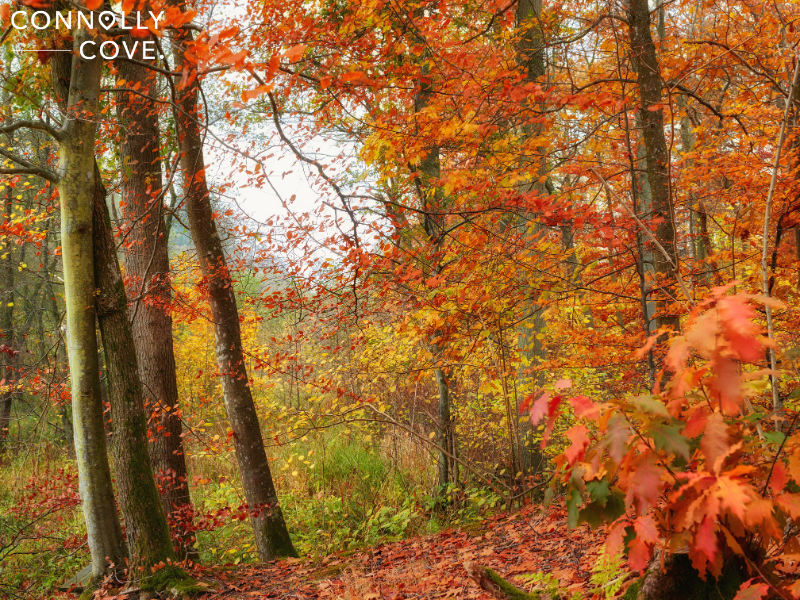
In our exploration of mystical forests, we recognise that the inherent value of these ecosystems is often encapsulated by their unique indigenous flora and fauna.
Standing as sentinels of biodiversity, native trees and plants, alongside an array of wildlife, create a tapestry of life that maintains the ecological balance of habitats like ponds and forests, supporting creatures like deer, which are pivotal to the ecosystem.
The Role of Native Trees and Plants
Native trees and plants serve as the foundation of any forest ecosystem, shaping the character of the landscape and supporting myriad life forms. In Ireland, for example, ancient woodlands are often dominated by oaks and yew trees, which not only offer a refuge for wildlife but are also steeped in cultural significance, resonating through Irish folklore. Majestic oak groves provide not just shade but a complex, layered vegetation structure that sustains diverse species.
Across the Atlantic, the Amazon Rainforest stands as a paradigm of ecological diversity with its incredible array of vegetation. Studies underscore that Indigenous Peoples have been cultivating and conserving these forests for millennia, reinforcing their critical role in maintaining biodiversity. The dense canopy formed by trees such as the tall ceibo and myriad fruit-bearing trees enrich the soil and are pillars of the local food systems.
Wildlife Habitats and Ecosystem Preservation
The intact habitats found within these ancient forests are sanctuaries to an array of wildlife, each playing a role in ecosystem sustainability. The lush undergrowth and hidden ponds of Ireland’s woodland provide vital breeding grounds for species like the Irish hare, while the expansive Amazon basin is the cradle for wildlife such as the elusive jaguar, whose survival is intricately linked to the health of the rainforest.
In the Amazon, Indigenous traditions and knowledge are instrumental in protecting the rainforest’s wildlife and their habitats. The preservation efforts by Indigenous groups not only safeguard the myriad species but also the rich ecosystems that sustain them.
The intricate web of life here relies on an intact habitat where each creature, from the minute insects to the top predators, maintains the delicate balance of the rainforest ecosystem.
The Diverse Ecosystems Within Forests
Forests around the world are not just vast stretches of trees but complex ecosystems boasting a remarkable array of biodiversity. Within these natural wonders, every layer and landscape plays a crucial role in maintaining the ecological balance.
Understory Plants and the Role of Mosses
The forest understory is a critical player in an ecosystem’s health, where mosses often serve as the unsung heroes. These soft, verdant plants create a dense carpet that retains moisture, supporting numerous microhabitats. Mosses play a pivotal role by facilitating water retention and soil stability, making them integral to conservation efforts.
Peatlands and Blanket Bogs as Carbon Storehouses
Stepping into the realm of peatlands and blanket bogs, we find ourselves amidst one of nature’s most efficient carbon sinks. These areas, rich in partially decayed organic matter, stash away vast amounts of carbon, mitigating the impacts of climate change.
Conservation of these unique ecosystems is imperative to maintain their status as critical carbon storehouses, emphasising the intrinsic link between biodiversity and global ecological health.
Sustainable Practices and the Environment
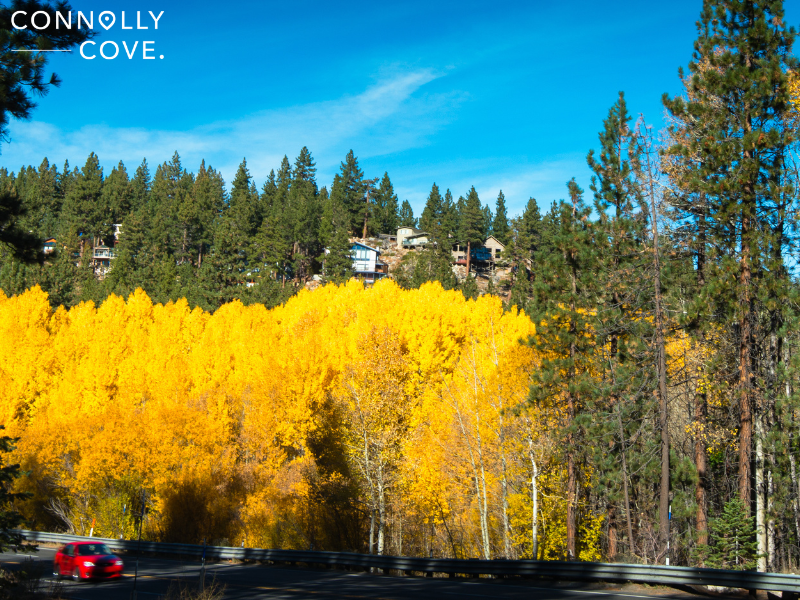
In the face of climate change, it is essential for us to adopt sustainable practices in forestry and agriculture to ensure a resilient environment for future generations.
Climate Change Challenges and Forests
Climate change presents pressing challenges to the world’s forests, from the verdant expanses of Ireland’s ancient woods to the vast canopy of the Amazon Rainforest. These ecological giants do more than provide aesthetic appeal; they are integral in the fight against climate change. Forests absorb carbon dioxide, a greenhouse gas, and help mitigate climate change.
Yet, these forests face threats from deforestation and land-use changes, exacerbating the climate crisis. Actions such as tree-planting initiatives and efforts to fight deforestation are imperative to protect these critical natural resources. Reforesting areas that have been cleared is just one approach to maintaining the balance between human needs and environmental health.
Sustainable Forestry and Agriculture Integration
Sustainable forestry is a balanced approach that reflects the natural patterns of disturbance and regeneration found within forest ecosystems. By mimicking these natural processes, forestry can be both productive and ecological. Integration of sustainable agriculture practices with forestry, known as agroforestry, provides an avenue to sustainably use the land while preserving biodiversity and fostering economic stability.
This approach not only supports the livelihoods dependent on these forests but also contributes to the global effort to curb climate change. The coexistence of both agricultural and forestry land uses ensures that we can produce food while also maintaining forest cover and its associated climate benefits. Implementing sustainable forestry measures is critical in maintaining the health of our forests and, by extension, our planet.
Reconnecting Culture with Nature
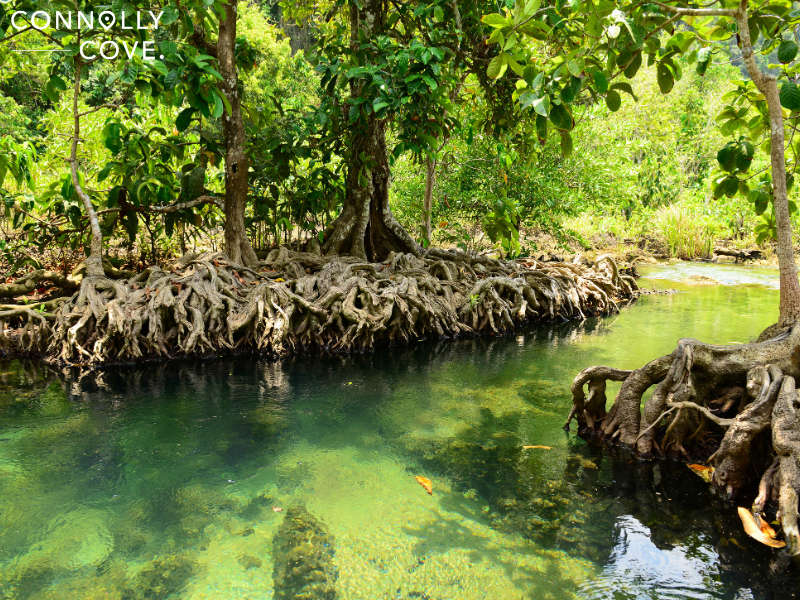
We find ourselves in an era where the need to blend cultural heritage with environmental action is more pressing than ever. This convergence is particularly potent in areas where ancient forests form an integral part of cultural identity and where reforestation initiatives engage the public to preserve these natural treasures for future generations.
Ireland’s Cultural Identity and Woods
Ireland, with its lush landscapes and ancient woodlands, has a deep-rooted connection to its forests. These woods are more than just a source of timber; they are woven into the fabric of Irish folklore and have historically been places of inspiration and spirituality.
The Irish forestry initiatives celebrate this bond by involving cultural elements in their conservation efforts. Through tree planting endeavours that favour native species like oak and ash, we’re not only restoring biodiversity but also reviving the enchantment of our ancient woods — places where legends and legacy grow together.
Public Involvement in Reforestation
Reforestation is not a one-hand task; it requires widespread public support. We’re seeing a surge in community-driven efforts, where individuals and organisations contribute through donations or hands-on participation in tree planting days.
The involvement of local communities reinforces the notion that the health of our forests is a collective responsibility and a shared cultural duty. Whether it’s through educational programs or inclusive volunteer opportunities, every sapling planted is a step towards a greener, more resilient Ireland, deeply interwoven with the essence of our shared cultural heritage.
Forestry Management and Professional Roles

In managing mystical forests across the world, from the ancient woodlands of Ireland to the sprawling Amazon, the roles of forestry professionals are critical. These individuals apply scientific knowledge and technical skills to care for these vital ecosystems.
The Expertise of Ecologists and Foresters
Ecologists possess a deep understanding of how different living organisms, like tree seeds and wildflowers, interact with one another and their environment. They provide essential insights into maintaining the delicate balance of forest ecosystems. Foresters, meanwhile, apply this knowledge practically.
Their expertise in the growth, cultivation, and harvesting of trees is fundamental to sustainable forest management. This symbiotic relationship between ecologists and foresters ensures that our interactions with these mystical spaces are conscientious and beneficial to both the environment and human needs.
Rewilding Efforts and Biodiversity Projects
Rewilding is a progressive approach to conservation, focusing on restoring the natural processes of forest ecosystems. Here, the spread of native tree seeds and the introduction of indigenous wildflowers are common practices.
These efforts are spearheaded to increase biodiversity, which is critical in the resilience of forests against climate change and disease. These projects are often collaborative, involving various stakeholders, from conservationists to local communities, ensuring a multifaceted approach to ecological restoration.
Challenges Facing Forests
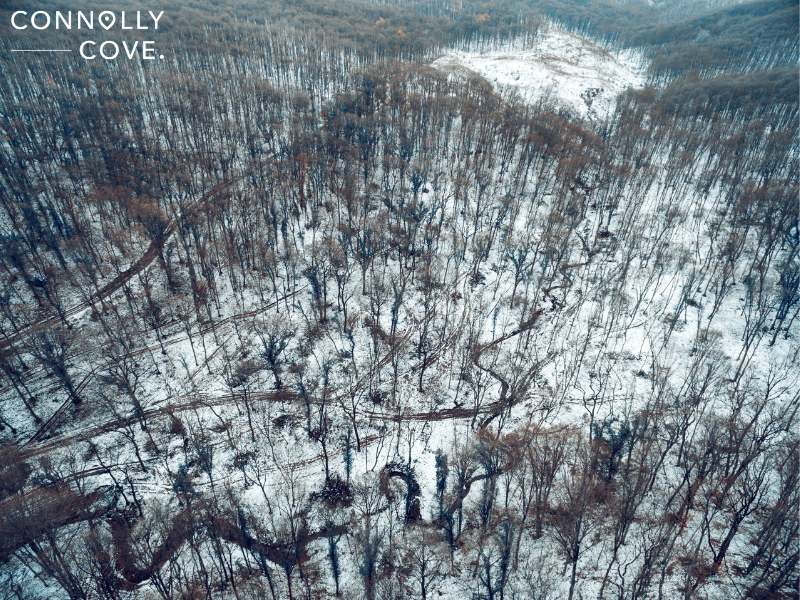
Forests across the globe are grappling with an array of complex issues that threaten their existence. Our mystical forests, from the ancient woodlands of Ireland to the expansive Amazon, are under duress.
We explore the specific challenges these vital ecosystems face, with a focus on the spread of non-native species and the impacts of grazing and woodland clearance.
Controlling the Spread of Non-native Species
Non-native species, such as the Sitka spruce (Picea sitchensis), have been introduced into forests, often causing an imbalance in the ecosystem. Originally from North America, the Sitka spruce is now found within Ireland’s forests, where it thrives at the expense of local flora and fauna.
The introduction of these species can lead to the destruction of native habitats, alter water regimes, and result in a decrease in biodiversity.
The Effects of Grazing and Woodland Clearance
The presence of grazing animals has a significant impact on the structure and species composition of forests. Intense grazing by species such as deer can inhibit the growth of young trees, leading to issues with forest regeneration.
Moreover, woodland clearance for agriculture and urban development remains a persistent issue, leading to the loss of forest cover and fragmentation of habitats. This clearance not only reduces the area available for wildlife but also contributes to soil erosion and the decline of ecosystem services provided by forests.
Ireland’s forest story is one of both challenge and potential. While significant progress has been made, continued threats and a need for ongoing investment remain. By acknowledging these challenges and actively working towards solutions, we can ensure a future where Ireland’s forests flourish once more. Their health is not just about the environment; it’s about the well-being of the nation as a whole.






